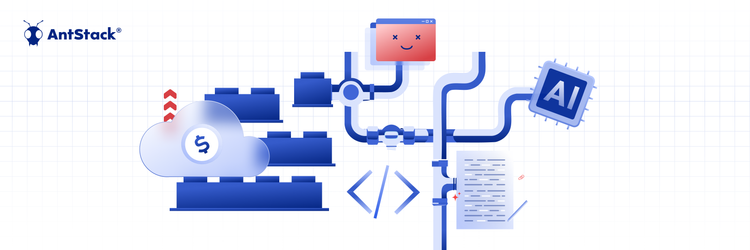Rethinking Cloud Spend: Modernization Over Short-Term Cuts
Serverless: The Future Of Cloud Computing
Serverless is a cloud computing model allowing users to run their applications without managing a server. Serverless doesn't mean that the server is not present but is managed separately from the applications. A cloud provider handles the serverless architecture. App developers must package their code and deploy it through containers that package software with elements required to run in any environment.
Serverless computing has been around for less than a decade. This emerging technology is gaining popularity in cloud computing, allowing developers much more flexibility than traditional cloud options. In this innovative technology, an external source manages the server's infrastructure.
The growth of serverless computing has been swift. It has become a vital component of the next-generation cloud infrastructure due to the ability to code without worrying about the crucial work of all necessary hardware and software.
The idea behind serverless computing is that coding is done in any language or framework and then run on a platform that handles scaling availability. You may pay for only the resources consumed during execution. Traditionally, the payments also went for idle time or unused capacity, but with serverless, all such extra costs are negated.
Advantages Of Serverless Architecture
Low cost
No server management is necessary
Better scalability
Improved flexibility
Evolution Of App Monitoring
All apps require monitoring, and serverless monitoring has unique advantages that more and more developers are utilising as a service. For instance, applications can be scaled instantaneously while serving as many users as required. This cut costs drastically as one needs to pay for what one needs. Startups are taking advantage of this ability because they can try to lift their business with a fraction of the traditional budget. There are numerous tools available for serverless monitoring. When monitoring serverless, the focus should be on the entire function.
What Should Be Monitored?
Cold Starts
Errors
Success Request Ratio
Latency
Cost
Infrastructure As Code
Earlier, computer infrastructure could only be managed through manual intervention. Servers had to be mounted on racks, and the operating systems had to be installed. This was an issue when infrastructure changes were frequent.
Several technologies, like virtualisation and the cloud, have drastically shortened software development cycles, which has led to an increased demand for better infrastructure management techniques. Infrastructure as Code has been vital in improving infrastructure management standards and the time needed for deployment.
Advantages Of Infrastructure As A Code
Speed
Consistency
Lower cost
Accountability
Reusability
Superior End-To-End Security
The future is serverless, and the type of security it requires must also be futuristic. Many tools make sure that serverless infrastructure is protected from new emerging threats by providing superior end-to-end security. A part of the stack in serverless computing is handed over, and they ensure that their part of the server is properly secured. The nature of serverless computing makes attacks challenging and infrequent. The serverless applications structure allows greater security options as they are present in numerous small functions. The scope of any risk is reduced as an attacker if there is a vulnerability in just one function.
Serverless As A Non-Negotiable Element Of 'Green It' Strategies
One of the key benefits serverless computing provides is that it is sustainable and green. A serverless app scales easily and runs only when users need it. Hence, serverless is considered greener than traditional applications in the cloud. Green computing is slowly becoming a non-negotiable of green IT strategies not only due to the minimised impact on the environment but also because it provides organisations with a cost-effective and efficient system. Ultimately, few resources are required, and the future embraces Green IT fervently.
Unified Platform Of Serverless For The Cloud
Platforms like Anthos are flexible and serverless and develop platforms for hybrid and multi-cloud environments. Unified Cloud Service Providers offer Unified Cloud Platforms (UCP) that deliver multiple cloud services via one common infrastructure. This service includes servers, storage, databases, networking, and analytics. Serverless UCPs offer several advantages besides serverless architecture, allowing faster innovation, flexible resources, and economies of scale. You usually pay only for cloud services you use, helping lower your operating costs, run your infrastructure more efficiently, and scale as your business needs change. UCPs lead to the acceleration of cloud adoption with higher levels of security and reliability.
Wrapping Up
Serverless has become imperative for app developers. It has made computing more cost-effective and efficient while being greener. From large organisations to startups, many more people are opting to be serverless and moving forward. Thus, serverless is the future.









